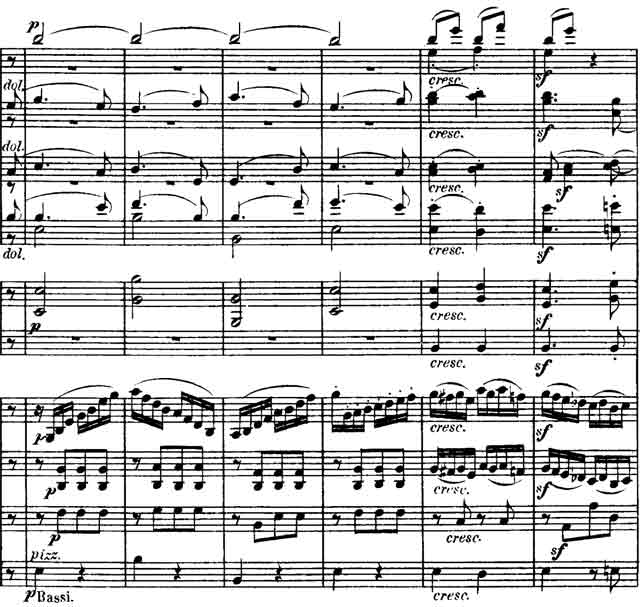This is the symphony which truly defined an age – Beethoven’s “heroic” period, in which many of his great works were composed – as well as the beginning of the “Romantic” period of classical music.
The Eroica is a break from the past. A massive work, it is the longest symphony composed up to that point, making substantial demands on players and audiences alike. Beethoven began composing the Eroica in 1803. He initially called the symphony “Bonaparte,” even writing a dedication to Napoleon Bonaparte as the exemplar of a new age of freedom and liberty; but he angrily tore that up in 1804 when Napoleon had himself crowned Emperor. Instead, Beethoven re-dedicated this work more generally as a “Heroic Symphony to celebrate the memory of a great man.”
The “Eroica,” as it came to be known, was first publicly performed 200 years ago in Vienna in April 1805. We are pleased to help usher in its next century of performance.
The first movement, after starting on two crashing chords, is built on a rising and failing 10-note theme, first taken up by the ‘cellos and then by the winds. Several melodic counter-themes introduced by the winds follow; a series of striking chords punctuates the first section. There is a massive development section in which these themes are expanded, culminating in a crashing series of syncopated chords played by the entire orchestra. A lengthy transition, with an intentional “false entrance” played by the horn against hushed violins, brings us to the recapitulation of the opening theme; a striking coda heralded by the opening theme in the second violins brings us to the end of this movement.
The second movement Funeral March evokes many emotions – grief, despair, defiance, anger and rage on the one hand; warm remembrance, hopefulness, and triumph on the other – before ending in a broken hush. The Scherzo is notworthy for its quick, light and playful character; the Trio for its sonorous horns evoking hunting calls.
After an introductory rush of notes, the last movement’s theme begins simply with plucked strings, is picked up in turn by the winds, and is expanded with a series of variations. A flowing melodic theme is then introduced by the winds. Beethoven then takes us through a number of renditions, including fugal treatments, solo flute and violin passages, and triplet and minor-key variations. A reverent interlude is introduced by the woodwind choir (could this be a hymn of praise to the “hero”?). After a murmuring transition, Beethoven abruptly switches gears again; there is a culminating Presto, with musical climax upon climax hurtling relentlessy to a triumphal conclusion.
Symphony No. 3 in Eb Major
"Eroica," Op. 55
Composed in 1805
By Ludwig van Beethoven






